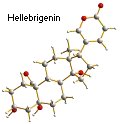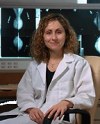When I first wrote about the doubts scientists were raising concerning sunscreens in Chem & Industry magazine some time in the early 1990s, it seemed that the findings would simply confuse consumers and cause a storm among manufacturers. Unfortunately, that doesn’t seem to be the case, sun worshippers carried on frying themselves, slapping on only meagre amounts of purportedly protective cream, partly out of laziness and partly because it is just so expensive and manufacturers continued to sell their products by the bucket load. Then research emerged that showed lack of sun exposure not only risks rickets but could increase the chances of you getting internal cancers, as opposed to the much feared skin cancer. As if consumers were not confused enough.
Now, US researchers have shown that applying too little suncream can actually turn the UV-absorbing chemicals against you.
When skin is exposed to sunlight, ultraviolet radiation (UV) is absorbed by skin molecules that then can generate harmful compounds, called reactive oxygen species or ROS, which are highly reactive molecules that can cause “oxidative damage.” For example, ROS can react with cellular components like cell walls, lipid membranes, mitochondria and DNA, leading to skin damage and increasing the visible signs of aging. The link with skin cancer itself is actually not so clear cut as some lobbyists claim.
However, when sunscreen is applied to the skin the UV filters in the sunscreen, reduce the amount of UV radiation penetrating the skin. Over time, though, the filters themselves are absorbed by the skin leaving the surface vulnerable to UV once more. The UV filters (octylmethoxycinnamate, benzophenone-3 and octocrylene) widely used in sunscreens themselves generate reactive oxygen species (ROS) in skin when exposed to ultraviolet radiation, augmenting the ROS that is naturally produced. [These new results are similar to those on which I reported in C&I ten years ago, DB]
Kerry Hanson of the University of California Riverside and colleagues now report that these three UV filters only work well if sunscreen is reapplied frequently to prevent ultraviolet radiation from reaching these filters. Without reapplication, these compounds could be just as harmful as not using sunscreen at all.
The team will publish their findings in a forthcoming issue of Free Radical Biology & Medicine.
“Sunscreens do an excellent job protecting against sunburn when used correctly,” said Hanson, who works in the laboratory of Christopher Bardeen, an assistant professor of chemistry at UCR. “This means using a sunscreen with a high sun protection factor and applying it uniformly on the skin. Our data show, however, that if coverage at the skin surface is low, the UV filters in sunscreens that have penetrated into the epidermis can potentially do more harm than good. More advanced sunscreens that ensure that the UV-filters stay on the skin surface are needed; such filters would reduce the level of UV-induced ROS. Another solution may be to mix the UV-filters with antioxidants since antioxidants have been shown to reduce UV-induced ROS levels in the skin.”
“For now, the best advice is to use sunscreens and re-apply them often — the Skin Cancer Foundation recommends every two hours, and especially after sweating or swimming, which can wash away sunscreen — to reduce the amount of UV radiation from getting through to filters that have penetrated the skin,” Bardeen said. “This, in turn, would reduce ROS generation.”
But, having read this please also read my write-up on how to sunbathe safely

 Breast cancer remains the most common form of cancer among women but screening with mammography involves exposure to ionising radiation and suffers from a high rate of false positives that then require a definitive assay. In the December issue of the journal Biopolymers, researchers in India describe how Raman spectroscopy might be used to discriminate between normal, benign, and malignant breast tissue and so provide a simple and relatively non-invasive complement to a suspicious mammogram.
Breast cancer remains the most common form of cancer among women but screening with mammography involves exposure to ionising radiation and suffers from a high rate of false positives that then require a definitive assay. In the December issue of the journal Biopolymers, researchers in India describe how Raman spectroscopy might be used to discriminate between normal, benign, and malignant breast tissue and so provide a simple and relatively non-invasive complement to a suspicious mammogram.  There has been a lot of discussion over the summer as to whether we should all be getting a bit more sun to boost cancer-fighting vitamin D levels. That argument coupled with revelations that suntan creams might themselves boost the risk of skin cancer all fly in the face of the contrary view that we should be staying in the shade.
There has been a lot of discussion over the summer as to whether we should all be getting a bit more sun to boost cancer-fighting vitamin D levels. That argument coupled with revelations that suntan creams might themselves boost the risk of skin cancer all fly in the face of the contrary view that we should be staying in the shade.